TESTING THE NOW FORGOTTEN 2010 HUSABERG FX450 & ITS UPSIDE-DOWN ENGINE

We get misty-eyed sometimes thinking about past bikes we loved, as well as ones that should remain forgotten. We take you on a trip down memory lane with bike tests that got filed away and disregarded in the MXA achieves. We reminisce on a piece of moto history that has been resurrected. Here is the exact test of the 2010 Husaberg FX450 as it appeared in the March 2010 issue.
Q: FIRST AND FOREMOST, IS THE 2010 FX450 BETTER THAN THE 2009 FX450?
A: Yes, with a caveat. The FX450 is a new model that didn’t exist in 2009. The previous Husaberg was the enduro-based FE450. The FX450 is designed for cross-country racing, while the FE450 was largely an all-around hare scrambles, WORCS and GNCC bike.
Q: IS THE 2010 HUSABERG FX450 A MOTOCROSS BIKE?
A: No. Think of the Husaberg FX450 by using these comparisons to KTM, which owns Husaberg. KTM basically makes three categories of bikes: (1) EXC. The EXC enduro models are designed for woods riding and enduros. (2) XC. The XC cross-country bikes are for GNCC, WORCS and hare scrambles. (3) SXF. The SXF bikes are KTM’s full-blown motocross bikes.
In Husaberg parlance, the FE450 is the equivalent of the KTM EXC, and the FX450 is the blood brother of the XC. Husaberg does not make a comparable SXF machine. That said, the 2010 FX450 is as close as Husaberg gets to a motocross machine, and with a few tweaks, MXA was able to race the FX450 much more effectively than last year’s FE450.
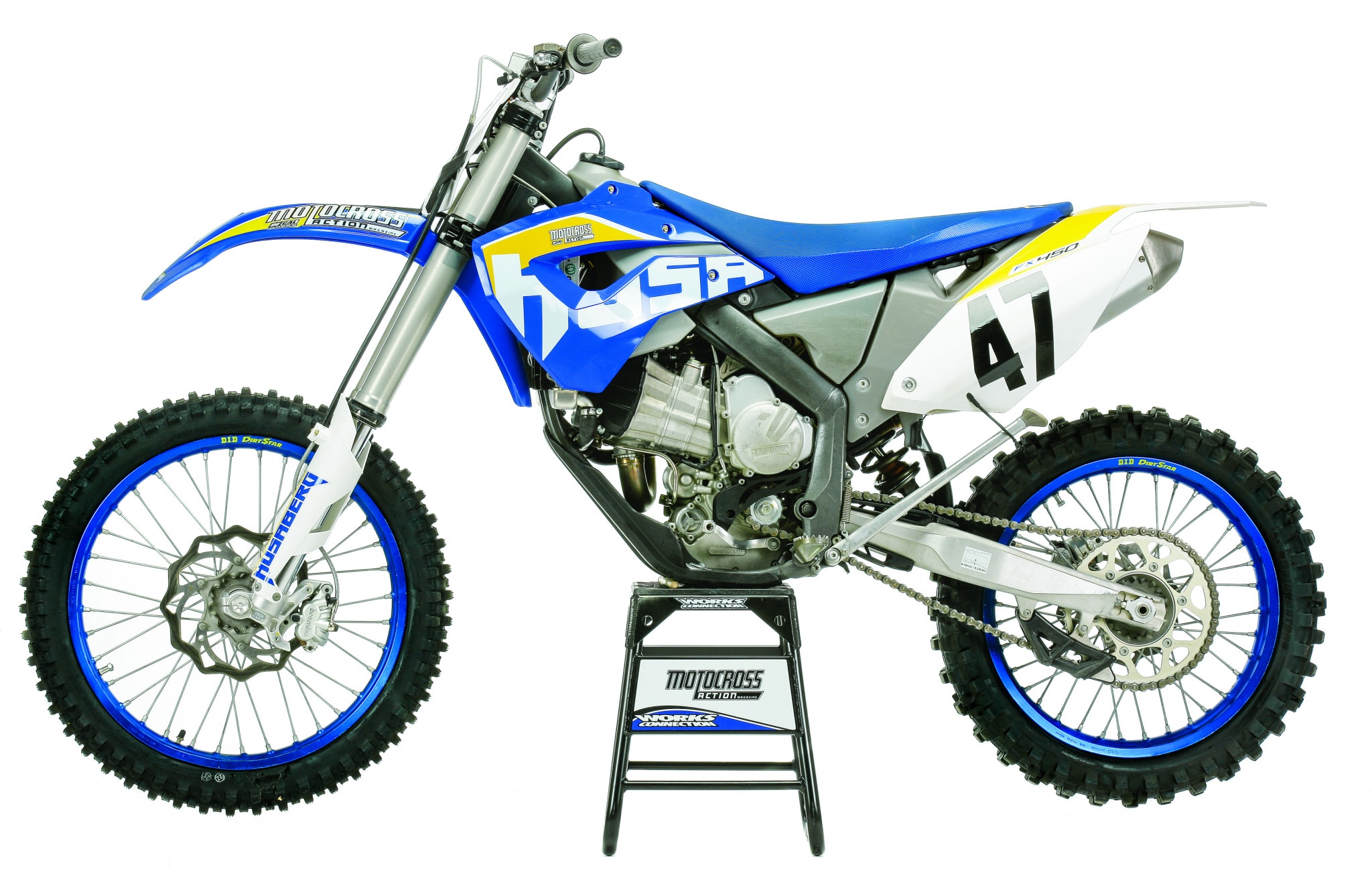
Q: HOW DOES THE HUSABERG FX450 DIFFER FROM THE HUSABERG FE450
A: There are seven very obvious changes.
(1) Gearbox. Husaberg switched to a six-speed transmission with new ratios in first, second, third, fifth and sixth gears (only fourth gear is the same as on the FE450).
(2) Forks. Husaberg used stiffer 48mm WP closed-cartridge forks (basically the KTM 450XC forks, valving and spring rates).
(3) Triple clamps. There are all-new 22mm offset triple clamps (with two bolts instead of three to feed in more flex).
(4) Shock. The WP shock gets the new “big needle” with special Husaberg FX450 valving specs.
(5) Wheels. A 19-inch rear wheel and Bridgestone M59/M70 tires come standard.
(6) Handlebars. The FX450 is outfitted with Renthal oversize bars in a special Husaberg FX450 bend.
(7) ECU map. There is no lambda sensor, which means it is now an open-loop system. They also nixed the thermostat, enduro lights, odometer and spark arrestor.
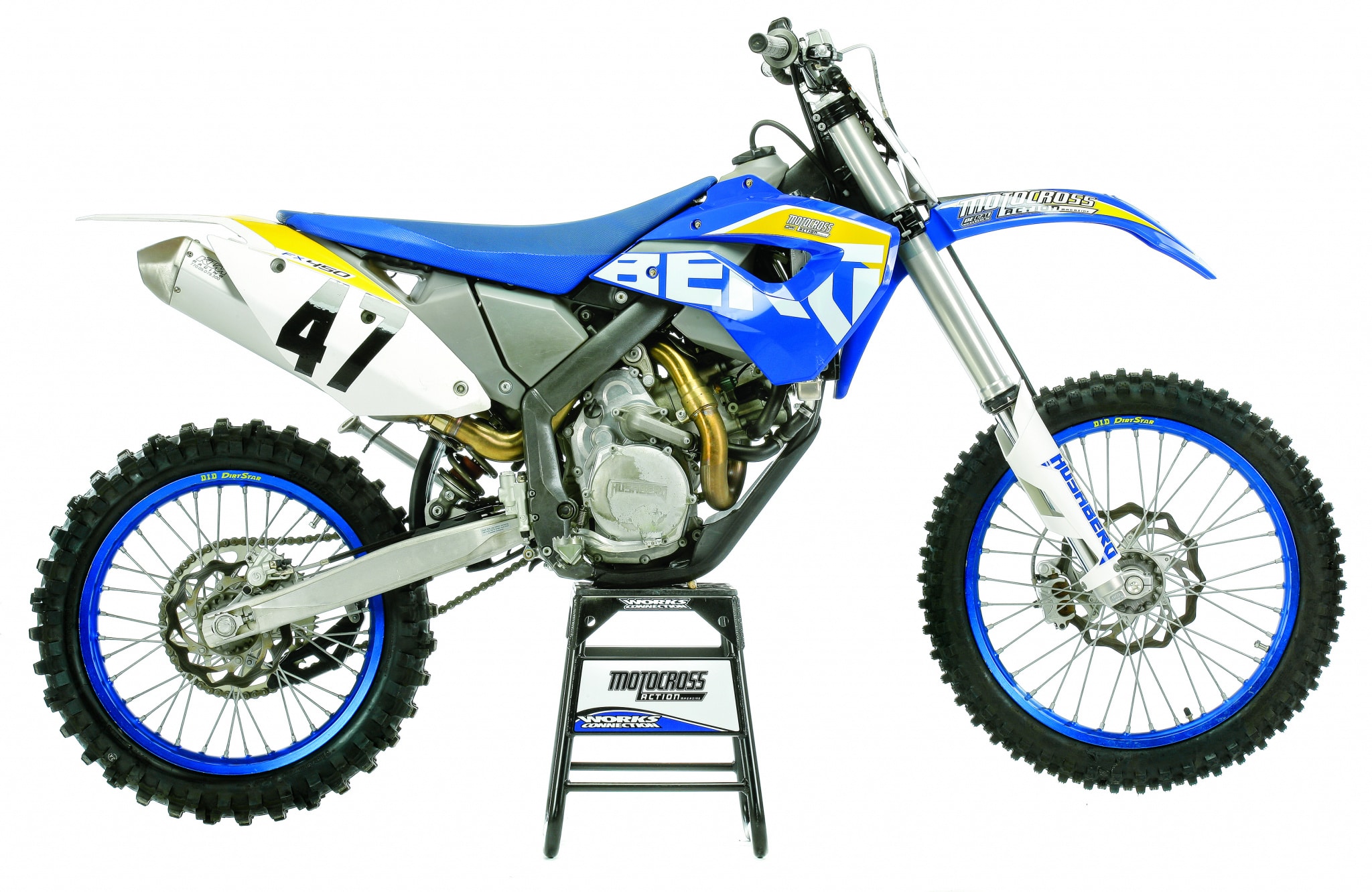
Q: IS HUSABERG SWEDISH OR AUSTRIAN?
A: Shhhh. Don’t tell anybody, but the Husaberg FX450 is made by KTM. And more than that, with the exception of the plastic, frame design and engine cases, every part on the Husaberg FX450 comes from the KTM parts catalog.
Q: WHAT’S THE DEAL WITH THE UPSIDE-DOWN ENGINE?
A: If you are among the majority of motocrossers who tripped over themselves to get a look at the reverse-cylinder 2010 Yamaha YZ450F, then you should recognize the Husaberg’s Jens Elmwall-designed engine as the precursor to the idea of moving the rotating mass closer to the center of gravity.
With the exception of the engine cases, the engine is made up of KTM parts, but not KTM 450SXF parts. The FX450 uses the single-overhead-cam, rocker arm-equipped 450XC-W engine. This SOHC engine is the replacement for KTM’s old RFS design. The single-cam activates rocker arms that control four stainless steel valves.
Q: WHAT’S THE DIFFERENCE BETWEEN HUSABERG’S CENTRALIZATION OF MASS IDEA AND YAMAHA’S?
A: In theory, the answer is nothing, but in practice, there are major differences. Whereas Husaberg tried to move the rotating mass of the engine’s crankshaft closer to the center of gravity by flipping the engine up and over, Yamaha angled its cylinder backward to get the rotational inertia of the cams nearer to the sweet spot, but not the crankshaft.
As you would expect, both ideas achieve a lighter feel in pitch, roll and yaw, but when designers take different paths to achieve the same thing, there are side effects.
Raising the crankshaft up 100mm and backwards 160mm, and putting the gearbox beneath the cylinder rather than behind it, places the rotating mass of the crankshaft closer to the bike’s center of gravity. With the rotating mass closer to the center of gravity, the torque effect on the chassis is greatly reduced. In layman’s terms, Husaberg put the part of the engine that wreaks havoc on handling as close as possible to the place where it will have the least effect on handling. Simple but clever.
The drawback is that Husaberg moved the heaviest parts of the engine upwards (and when gravity kicks in, you can feel it).
Q: CAN YOU REPROGRAM THE HUSABERG’S FUEL-INJECTION AND IGNITION MAPS?
A: Yes. The Husaberg comes with three preprogrammed maps already installed in the ECU. These can be adjusted without having to hook up any kind of reprogramming tool. The three curves are standard, soft and aggressive. The maps are activated by plugging the ECU leads into numbered ports. The standard map is when nothing is plugged in; the soft powerband map is when the leads are plugged into the number 1 slot; the aggressive map is with the leads plugged into number 2.
We ran the aggressive map. There is also a $599.95 Husaberg reprogramming tool that allows you to make more adjustments. You need a laptop computer to run the software, but you don’t need a battery because the Husaberg has its own battery power. There is also a remote dial that allows you to switch between maps without having to plug and unplug wires. It retails for $49.95.
Q: IS THE 2010 FX450 FASTER THAN THE FE450?
A: Yes. The straight-through muffler, new EFI map, lighter weight and better gear ratios produce a bike that is faster and more responsive.
Q: IS THE 2010 FX450 FASTER THAN A KX450F, CRF450, YZ450F OR 450SXF?
A: No. It’s not fast in a white-knuckle, arm-jerking, hairball way. It is pleasant, smooth and tractable. Those are code words for slow.
Q: HOW GOOD IS THE 2010 HUSABERG’S POWERBAND?
A: As far as the power goes, this is a majestically usable engine—not fast, not powerful, not aggressive. It asks the rider to maintain momentum, and it doesn’t get in the way if he gets the FX450 rolling. It is like a mild-mannered Clark Kent (without the Superman cape).
The good news is that Novice and Vet riders loved the engine. They were well aware that it took its own sweet time about getting going and could have used a little extra over-rev, but when used to its fullest, it carried speed with ease. Don’t get us wrong; it didn’t make speed, it just utilized what it had to the fullest. The power delivery was dual-stage. The low-to-mid transition was leisurely; then, as the power reached the middle, it surged with its best power delivery. It goes flat at the typical 8200 rpm of most fuel-injected bikes.
The bad news is that MXA’s intermediate-and-up test riders wouldn’t touch the Husaberg FX450 with a 10-foot pole. They wanted more hit, more power and more rev. The things that the Vets and Novices liked weren’t in the wheelhouse of a pro-level rider. A Pro doesn’t care much about the benefits of well-modulated power.
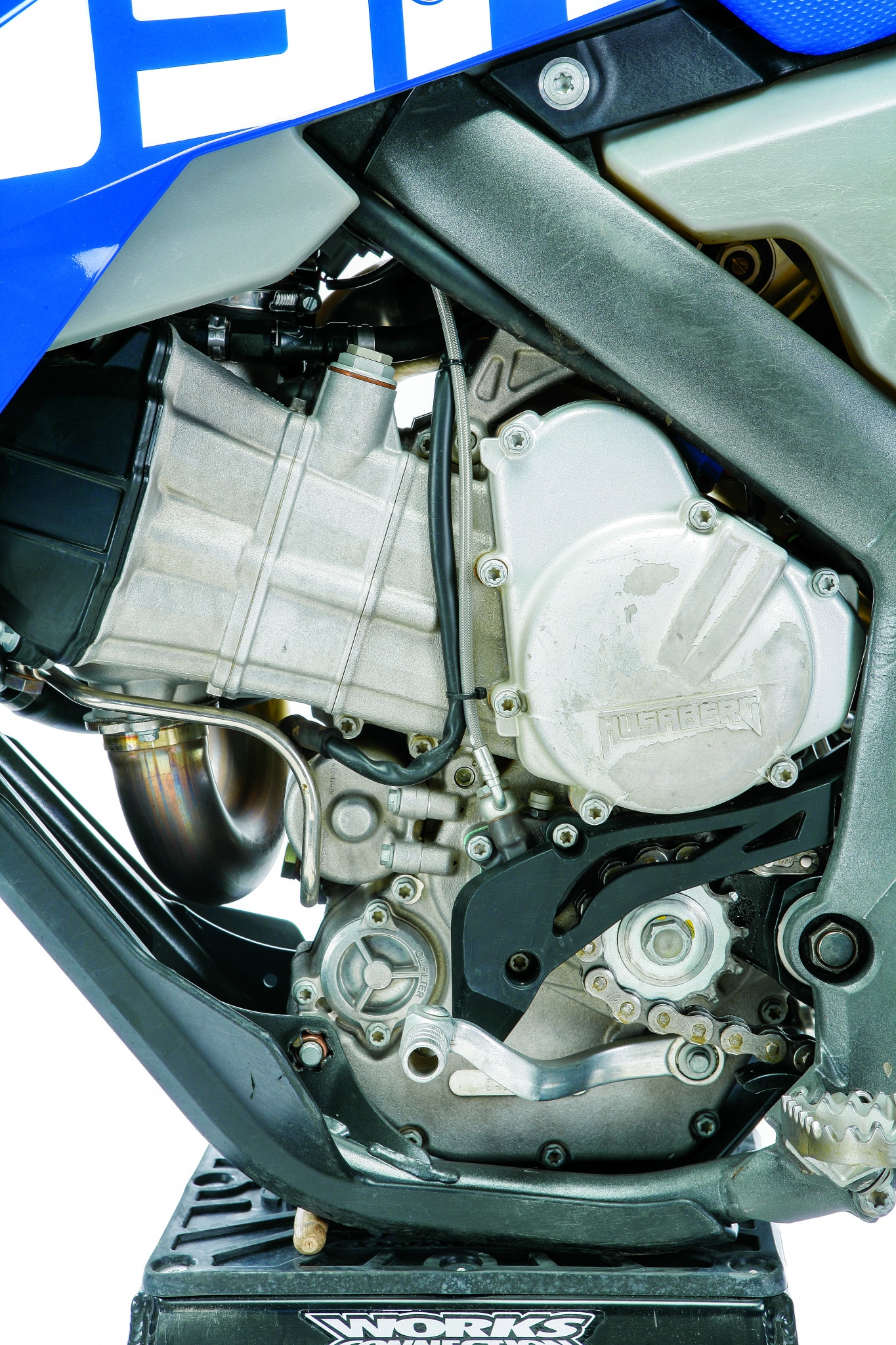
Your guess is as good as ours as to how you get the pipe off the FX450.
Q: HOW DOES THE 2010 HUSABERG FX450 RUN ON THE DYNO?
A: At 50.29 horsepower and 33.05 pound-feet of torque, the Husaberg is much better on the dyno than we expected. Although the power is soft and slow revving, the Husaberg FX450 actually makes more power than the 2010 Honda CRF450 from 5000 rpm to 8000 rpm (then the CRF450 beats it by 6/10 of a horsepower at peak).
When you compare it to the class-leading KX450F and KTM 450SXF, the Husaberg isn’t very impressive. It gives up over 3-1/2 horsepower at peak to both the green and orange bikes (and 4-1/2 horses at 9000 rpm to the KTM 450SXF).
Q: HOW WAS THE HUSABERG FX450 SUSPENSION?
A: We don’t know. Well, we do know, but because we knew, we didn’t even try to run it. Since we were only interested in racing motocross on the 2010 FX450, and we knew that the stock forks and shock weren’t up to the task, we swapped the FX450 forks for a set of KTM 450SXF forks. This may seem like an exotic switch, but it isn’t. The stock Husaberg forks are in fact off of a KTM 450XC, which has lighter valving and softer springs than the SXF forks we switched to. We could have re-valved the stock FX450 forks to achieve the same setup, but it was quicker and easier for us to make a brand-to-brand swap.
As for the shock, we couldn’t make a straight-across swap from the 450SXF to the FX450. Although the Husaberg shock is a replica of the KTM 450XC shock, the piggyback reservoir is mounted slightly askew to clear some parts of the Husaberg frame, thus the KTM shock won’t fit on the Husaberg. We re-valved the Husaberg shock to SXF specs and added a 7.6 kg/mm shock spring.
Q: HOW DOES THE 2010 FX450 HANDLE?
A: We absolutely loved it. Adored it! The combination of Jens Elmwall’s centralization of mass theories, our suspension stiffening program, the new triple clamp offset, the broad powerband and more balanced stance produced a bike that wanted to turn. In fact, it insisted on turning. The FX450 could rail berms, track through ruts and change directions on flat turns like, dare we say it, a Suzuki.
Perhaps if we had kept the ultra-soft XC forks and shock, we would have been singing a much different tune; but, with our suspension setup, this thing was a dream to ride on a tight twisty track.
We had a simple way to get the handling dialed in. We slid the forks up in the clamps until the FX450 exhibited oversteer, then we slid them down 2mm. If the track was high-speed and rough, we slid them down farther.
What we didn’t absolutely love is that the FX450 is heavy, and no amount of Elmwall Legerdemain can make that extra 20 pounds disappear. It might dissolve in the air, but it returns when you land. It might vanish when you lean it into a berm, but it reestablishes itself when you straighten up. The FX450 might feel agile when pitching the nose up and down over a tabletop, but it feels portly when terra firma is under the wheels.
All that said, we were impressed.
Q: WHAT DID WE HATE?
A: The hate list:
(1) Subframe. From an innovation point of view, Husaberg’s molded plastic sub-frame is very trick, but on a practical level it is stupid. It is ungainly, bulky, blocks access to the shock (we had to take the shock off the bike to change the spring preload) and, even with molded-in handholds (which are too far forward to be of any use), we’d need a Charles Atlas bodybuilding course to get the FX450 on its stand. Give us an aluminum subframe and we’ll be happy.
(2) Weight. We have a rule at MXA: if you can’t pick it up, you can’t race it. That left most MXA test riders sitting on the sidelines. Husaberg is on the no-fly list. You would think that all the stuff Husaberg removed from the FE450 to make it into the FX450 would add up to more than a 3-pound weight savings.
(3) Cost. At over $9498, you gotta want to be different.
(4) Gearing. When we tested the 2009 Husaberg FE450, we were shocked with how low first gear was and how short each gear was after that. The 2010 FX450 has different gear ratios, but they are equally weird. We thought about changing the 13/52 gearing, but nothing we tried worked well enough.

Q: WHAT DID WE LIKE?
A: The like list:
(1) Airbox. The air filter is located directly behind Husaberg’s remote gas cap and uses the seat as an airbox cover. Yamaha might want to buy a Husaberg to see how easy it can be to design an accessible airbox.
(2) Seat. The seat comes off in 5 seconds with a ripcord-style cable release system. Unfortunately, our first FX450 seat was constantly falling off in the middle of motos. The second one stayed put.
(3) Gas tank. The 2.2-gallon gas tank is under the seat to help with the centralization deal. It’s translucent gray and isn’t all that attractive, but we aren’t fans of black tanks either.
(4) Gas light. There is a low-fuel idiot light next to the EFI diagnostic light that comes on when you get down to a 1/2 gallon of gas. This is useless to a motocrosser, but we found the idea amusing.
(5) Diagnostic light. Should there be something wrong with the engine’s electronics or sensors, this light will flash out a Morse code-style dots-and-dashes signal. For example, four long flashes and one short flash means a short circuit in the fuel pump circuitry.
(6) Steel frame. Although it is not identical to a KTM frame, the FX450 frame does adhere to KTM’s design philosophy.
(7) Brakes. MXA has always been impressed by KTM’s 260mm front brake, but never has a bike needed good brakes as much as the overweight FX450.
(8) Electric start. Push-button bliss.
(9) Graphics. Not being Swedish, we aren’t that into the blue and yellow decor, but we like the durability of in-mold graphics. They last forever.
Q: WHAT DO WE REALLY THINK?
A: From a purist point of view, the 2010 Husaberg FX450 is too heavy, too slow and too weird to be taken seriously by hardcore racers. On the other hand, this bike is like no other machine on the planet—and because of that, it does some things remarkably well. A cross-country racer who does the occasional motocross probably couldn’t find a better bike.
MXA’S 2010 HUSABERG FX450 SETUP SPECS
This is how we set up our 2010 Husaberg FX450 for motocross. We offer it as a guide to help you find your own sweet spot.
FX450 WP FORK SETTINGS
For hardcore racing, we recommend this fork setup on the 2010 Husaberg FX450:
Spring rate: 0.50 kg/mm (0.46 stock)
Oil height: 365cc stock (380cc)
Compression: 12 clicks out
Rebound: 12 clicks out
Fork-leg height: 5mm up
Notes: By looking at the numbers, you can tell that our 450SXF forks were much stiffer than the stock FX450 forks. These are new forks for the Husaberg but not for KTM. Thanks to new seals and bushings, the amount of stiction has been reduced. Previous WP forks had excessive static friction. If you think the forks dive too much, you can raise the fork oil height by 10cc.
WP SHOCK SETTINGS
For hardcore racing, we recommend this shock setup for the 2010 Husaberg FX450:
Spring rate: 7.6 kg/mm (7.2 kg/mm stock)
Race sag: 105mm
Hi-compression: 1-1/4 turn out (1-1/2)
Lo-compression: 12 clicks (15 clicks stock)
Rebound: 12 clicks (22 clicks stock)
Notes: We set up the FX450 with 105mm of race sag with our stiffer 7.6 kg/mm spring and SXF valving.
FX450 FUEL-INJECTION SETTINGS
Given the 70-degree layout of the cylinder, running a carburetor would have presented some serious space issues. But, since the FX450 is fueled by a 42mm, downdraft, Keihin, electronic fuel injector, the angled cylinder is not a problem. It should be noted that Husaberg dropped its sophisticated, closed-loop, fuel-injection management system in 2010 for the basic open-loop sensor system used by Honda, Suzuki, Yamaha and Kawasaki.
Throttle body: Keihin 42mm
Injector: 12-hole
Injector size: 60 microns
Fuel pump/pressure: Electric/40 psi
Fuel map: Adjustable (three optional maps)
Idle: 42 clicks out
Notes: Husaberg equips the FX450 with a programmable ignition. It can be switched between three different maps in a few minutes or totally reprogrammed with the Husaberg programming tool.


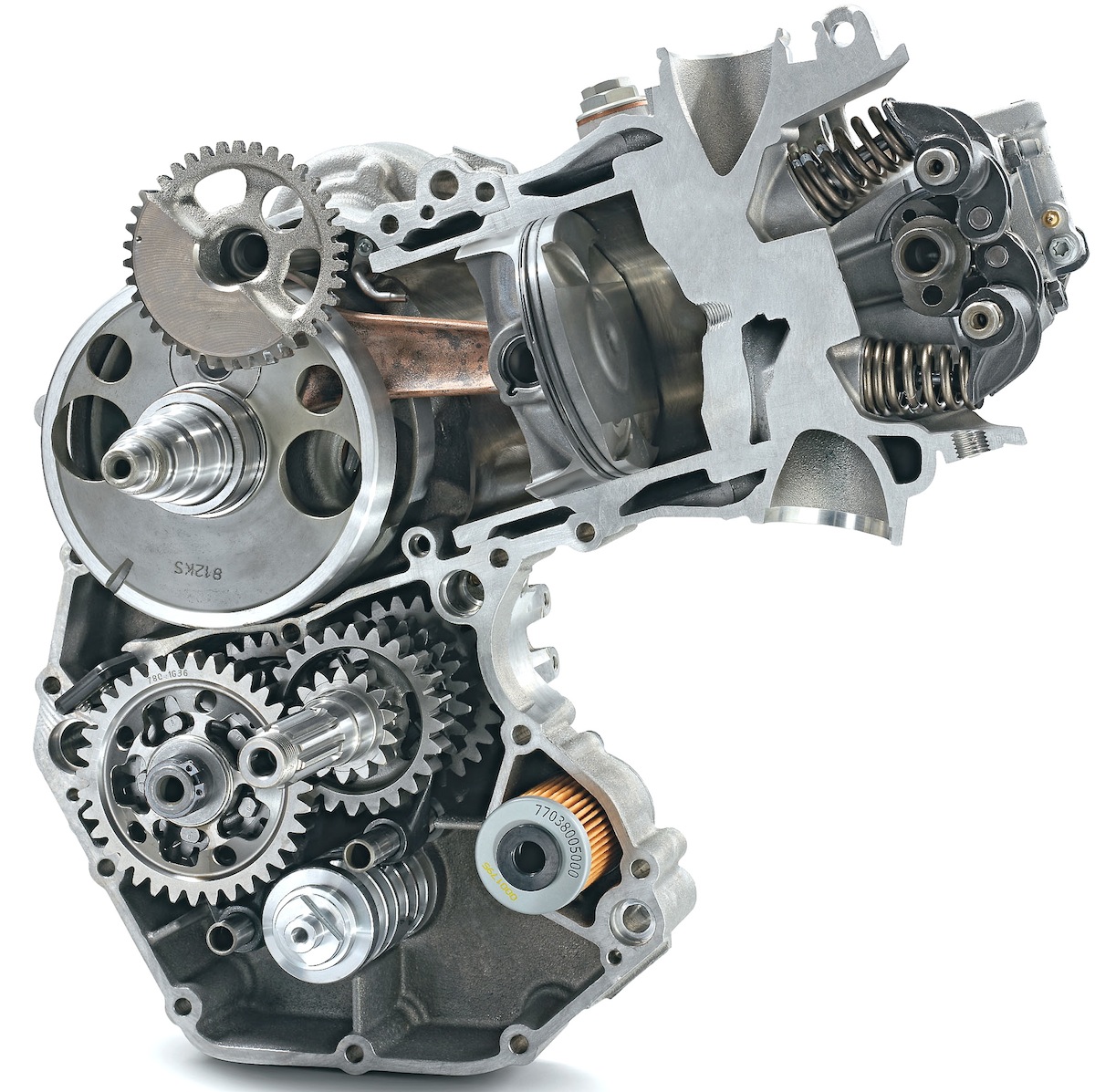
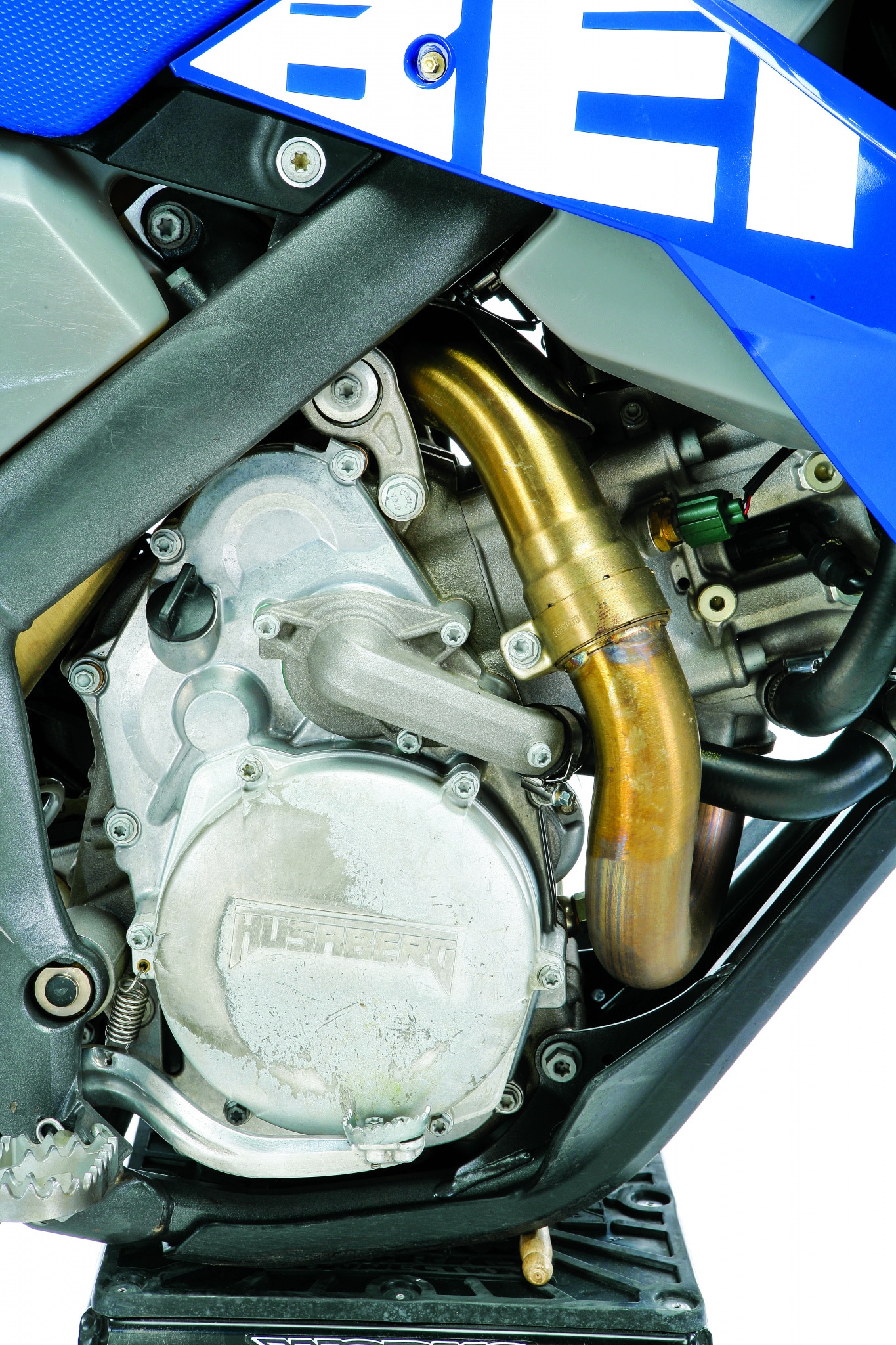





Comments are closed.